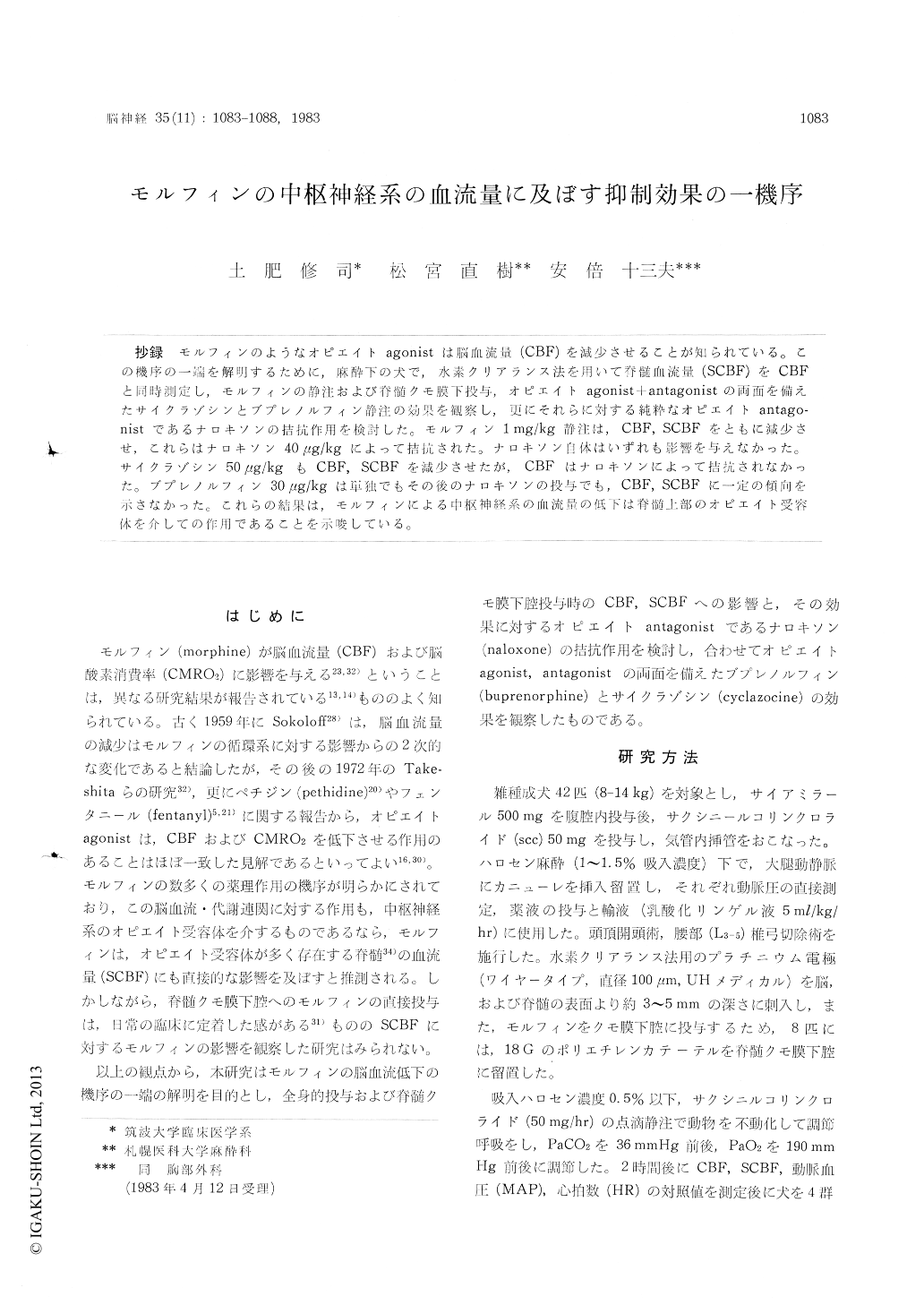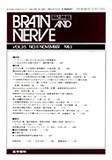Japanese
English
- 有料閲覧
- Abstract 文献概要
- 1ページ目 Look Inside
抄録 モルフィンのようなオピエイトagonistは脳血流量(CBF)を減少させることが知られている。この機序の一端を解明するために,麻酔下の犬で,水素クリアランス法を用いて脊髄血流量 (SCBF)をCBFと同時測定し,モルフィンの静注および脊髄クモ膜下投与,オピエイトagonist+antagonistの両面を備えたサイクラゾシンとブプレノルフィン静注の効果を観察し,更にそれらに対有る純粋なオピエイトantago—nistであるナロキソンの拮抗作用を検討した。モルフィン1mg/kg静注は, CBF, SCBFをともに減少させ,これらはナロキソン40μg/kgによって拮抗された。ナロキソン自体はいずれも影響を与えなかった。サイクラゾシン50μg/kgもCBF , SCBFを減少させたが, CBFはナロキソンによって拮抗されなかった。ブプレノルフィン30μg/kgは単独でもその後のナロキソンの投与でも, CBF, SCBFに一定の傾向を示さなかった。これらの結果は,モルフィンによる中枢神経系の血流量の低下は脊髄上部のオピエイト受容体を介しての作用であることを示唆している。
Narcotic agonists such as morphine are well known to decrease cerebral blood flow and meta-bolism. To investigate a possible mechanism for this action of narcotics, cerebral blood flow (CBF) and spinal cord blood flow (SCBF) were simulta-neously measured by the hydrogen clearance technique following intravenous or subarachnoid administration of morphine and subsequent nalo-xone in lightly anesthetized dogs. The effects of new opiate agonist +antagonists, cyclazocine and buprenorphine, alone or in a combination with naloxone on those CNS blood flow were also investigated. Morphine, 1 mg/kg iv, produced significant decreases in both CBF and SCBF (p < 0. 01), which were reversed by naloxone, 40 #g/kg. Naloxone per se did not produce any change in both. Cyclazocine, 50 fig/kg iv, also produced significant decreases in both CBF & SCBF (p < 0. 05), but the decreased CBF was not reversed by naloxone. Buprenorphine, 30 itglkg, showed vari-able changes in both CBF and SCBF, resulted insignificant reduction. However, spinal sub-arachnoid administration of morphine, 0. 2 mg, with which profound analgesia can be obtained in human adults, did not cause any changes in SCBF as well as CBF. These results suggest that narcotic analgesics affect SCBF similar to CBF and mor-phine decreases CNS blood flow via the activation of supraspinal opiate receptors.

Copyright © 1983, Igaku-Shoin Ltd. All rights reserved.


